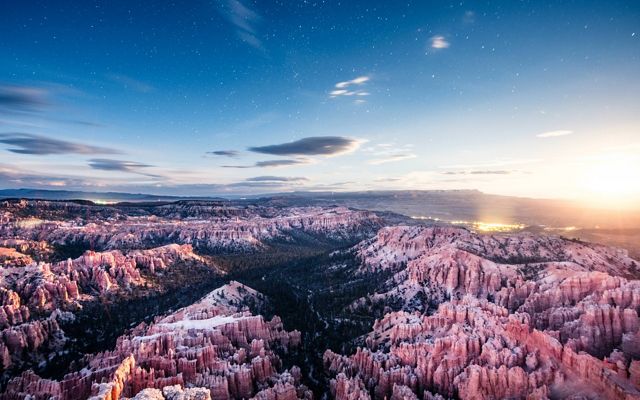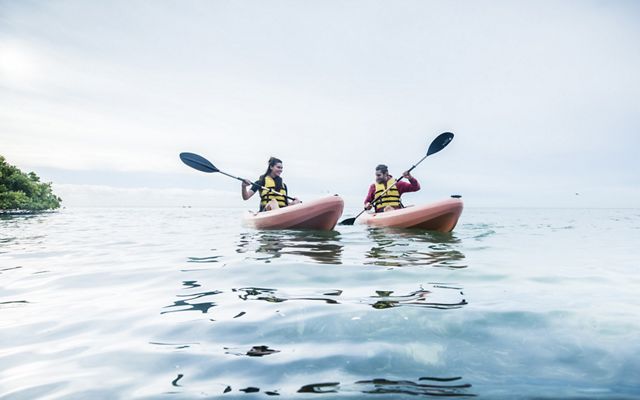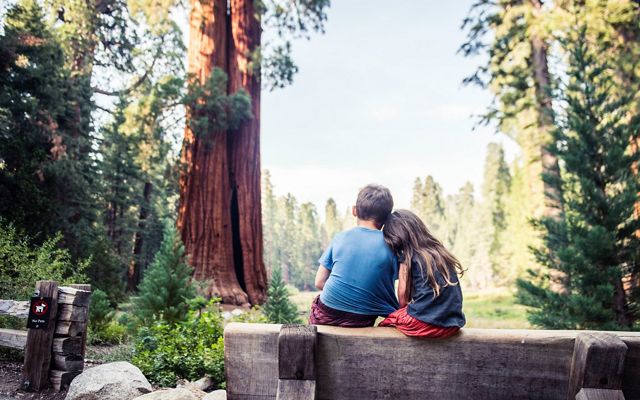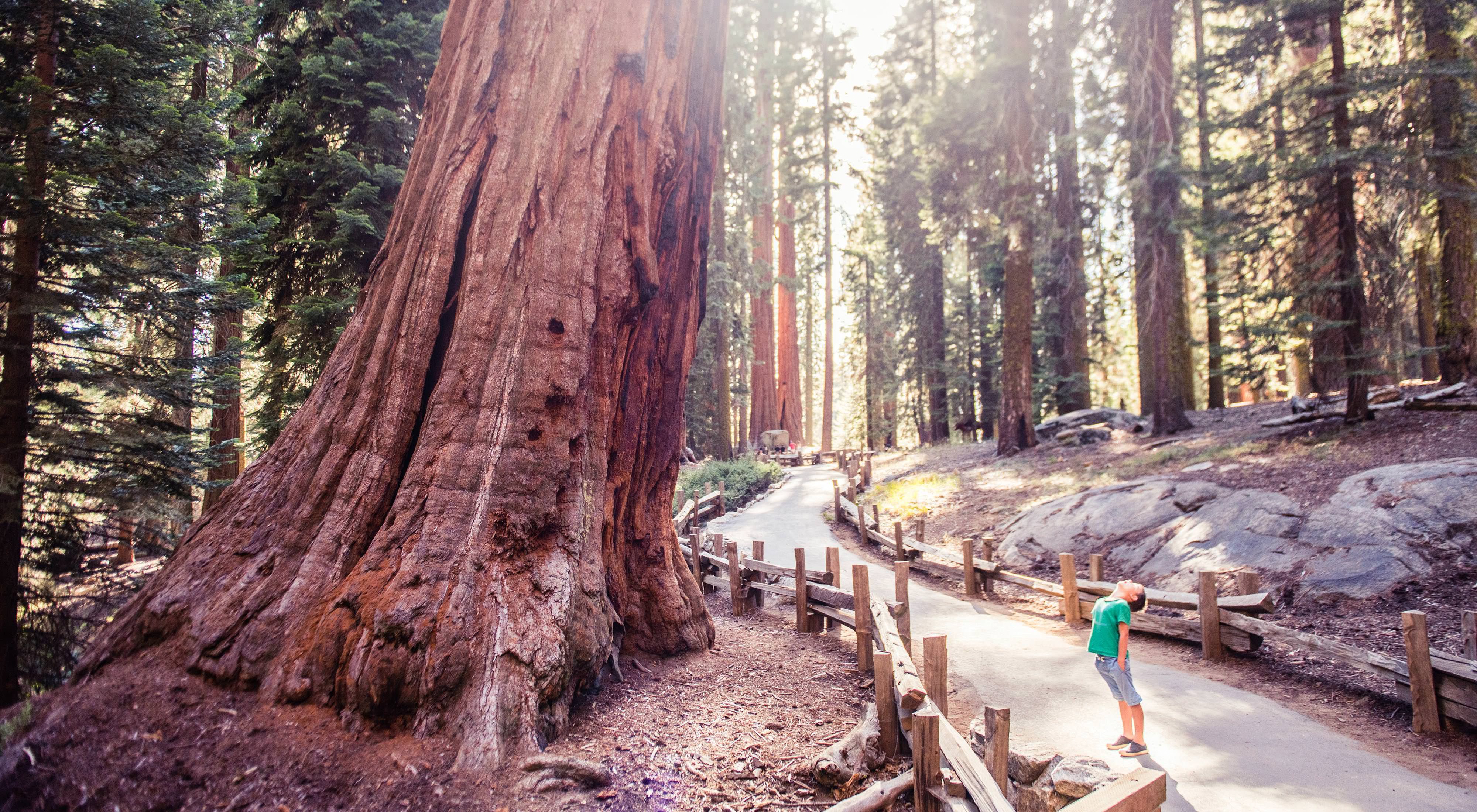Worlds of Wonder
From California's towering sequoias to Maine's craggy coast, we celebrate five awe-inspiring National Parks.
June/July 2016
ACADIA NATIONAL PARK is where New England’s “quintessential rugged granite meets the ocean,” says Barbara Vickery, who directs The Nature Conservancy’s conservation programs in Maine. The rocky shoreline has long drawn people to visit Acadia, which in 1919 became the first national park east of the Mississippi River.
It was also the first park to emerge from private citizens’ land donations. Concerned about encroaching development and logging, a group of year-round Maine residents and summer vacation-goers contributed land that led to the park’s creation.
The national park was not a certainty, says Vickery, who has worked for the Conservancy in Maine for more than 30 years. “It could very easily have been different in the sense of becoming much more developed,” she says. “But it also could have been ... privatized and all magnificent estates with ‘No Trespassing’ signs at the front of each driveway.”
The park now anchors an important regional system of protected lands, including an endpoint of the Appalachian Trail: Mount Katahdin in Baxter State Park, where the Conservancy has helped protect more than 240,000 acres of nearby forest. Acadia is also one of the most popular national parks, with more than 2 million visitors annually. Says Vickery: “That sense of recognizing that some places are so special they belong to the world, and not just to a few people, is inspirational.”

People visiting ROCKY MOUNTAIN NATIONAL PARK for the first time invariably have the same reaction: “Their breath is just taken away when you come up on that alpine ridge and you look across for miles and miles,” says Chris Pague, the Conservancy’s senior conservation ecologist in Colorado.
The park includes the headwaters of the Colorado River and straddles the Continental Divide and several peaks in the 14,000-foot range. It hosts the highest visitors center in the park system, at almost 12,000 feet. More than 350 miles of hiking trails take people through different ecological zones and elevations with a vast variety of plants, wildlife and weather. In one day, says Pague, visitors can experience wildflower-filled meadows, evergreen forests and treeless alpine tundra, where “you get a massive vista of a wonderfully dissected landscape with snow and rock and ice and then look down on trees and lakes and streams and waterfalls.”
“We live in a state that goes from over 14,000 feet down to about 3,000 feet, and that diversity is pretty doggone impressive,” says Pague, who credits the park with cementing his decision to move to Colorado, where the Conservancy has protected more than 1 million acres. “Understanding the breadth that we dwell in, in this place is just an amazing, empowering thing,” he says.

“I think most people have never imagined such unique geologic formations,” says Elaine York, the Conservancy’s west desert regional director in Utah. BRYCE CANYON NATIONAL PARK protects a maze of colorful columns chiseled over millions of years by erosion from frost and rain. The rock formations look so improbable that the spires, called hoodoos, are also sometimes referred to as goblins or fairy chimneys.
The hoodoos, which are mostly limestone, can be found in other landscapes. But nowhere are they displayed so prolifically and impressively as in Bryce Canyon, where they range from about 5 feet tall to the height of a 10-story building. To top off the spectacle, sheer-faced rims of plateaus—called amphitheaters—surround many of the rock formations.
At about 56 square miles, Bryce Canyon is smaller than most national parks. But it is in the center of a group of unparalleled national parks in southern Utah that preserve the region’s high-desert landscape. Known as the “Mighty Five,” Bryce Canyon, Zion, Canyonlands, Capitol Reef and Arches national parks all lie within about 300 miles of one another. Bryce Canyon is also just 150 miles from the Grand Canyon in Arizona.
“I love Utah,” says York. “There are so many places to hike that we can’t begin to visit all of them during our lifetimes.”

BISCAYNE NATIONAL PARK “is basically Miami’s backyard,” says Chris Bergh, the Conservancy’s South Florida conservation director. Last year the park attracted more than 500,000 people for boating, swimming, paddling, snorkeling and diving.
“What’s beneath the waves is really one of the most remarkable things about the park,” says Bergh, who has lived in the Florida Keys nearly his whole life and works on Conservancy reef restoration projects. Underwater sights—such as colorful fish, rare corals, manatees and shipwrecks (six of which make up an underwater archaeological trail)—can all be found in Biscayne, the only national park that is 95 percent water.
The waters and islands of Biscayne mark the beginning of the Florida Keys, a string of islands that help make up the third-largest contiguous coral reef in the world. Before Biscayne gained protected status in 1968, plans had been drawn up to dredge the area for a seaport and build causeways and roads across the reef to connect the islands. Thanks to a group of citizens who advocated for federal protection, Biscayne’s 270 square miles are protected as marine wilderness, just a shell’s throw from Miami.
“It’s a very interesting opportunity to feel like you are in the city, and with a single step into the ocean, you become part of this wilderness experience,” says Bergh. “You go from concrete and cars into the realm of the sharks and stingrays and bottlenose dolphins and sea turtles.”

“I just remember being completely in awe of the trees,” says E.J. Remson, the Conservancy’s senior program manager in California, recalling his first visit as a child to SEQUOIA NATIONAL PARK, home of many of the world’s largest trees. Giant sequoia trees, whose trunks can be more than 100 feet around, are the towering gems of California’s protected lands.
Together, California’s parks illustrate how the state is “one of the most biodiverse places in the world,” says Remson, a nearly lifelong Californian who is working to create conservation corridors that help connect many large natural areas.
“It’s amazing how you can be in the most populous state in the country and then be out backpacking and not see anyone for a couple days—just get away and sleep in a place where you can hear your heart beat at night,” says Remson, who credits the state’s nine national parks with inspiring many Californians to be supportive of conservation and the designation of additional parklands. California has both the most national parks and the newest one—Pinnacles National Park, created in 2013. “I think we look at those parks as some of the things of which we are most proud.”
“When you go to Sequoia and you see the wildlife and see those incredible trees,” Remson says, “there is no person that can walk away untouched by the beauty of nature and the learning experience the park offers.”

